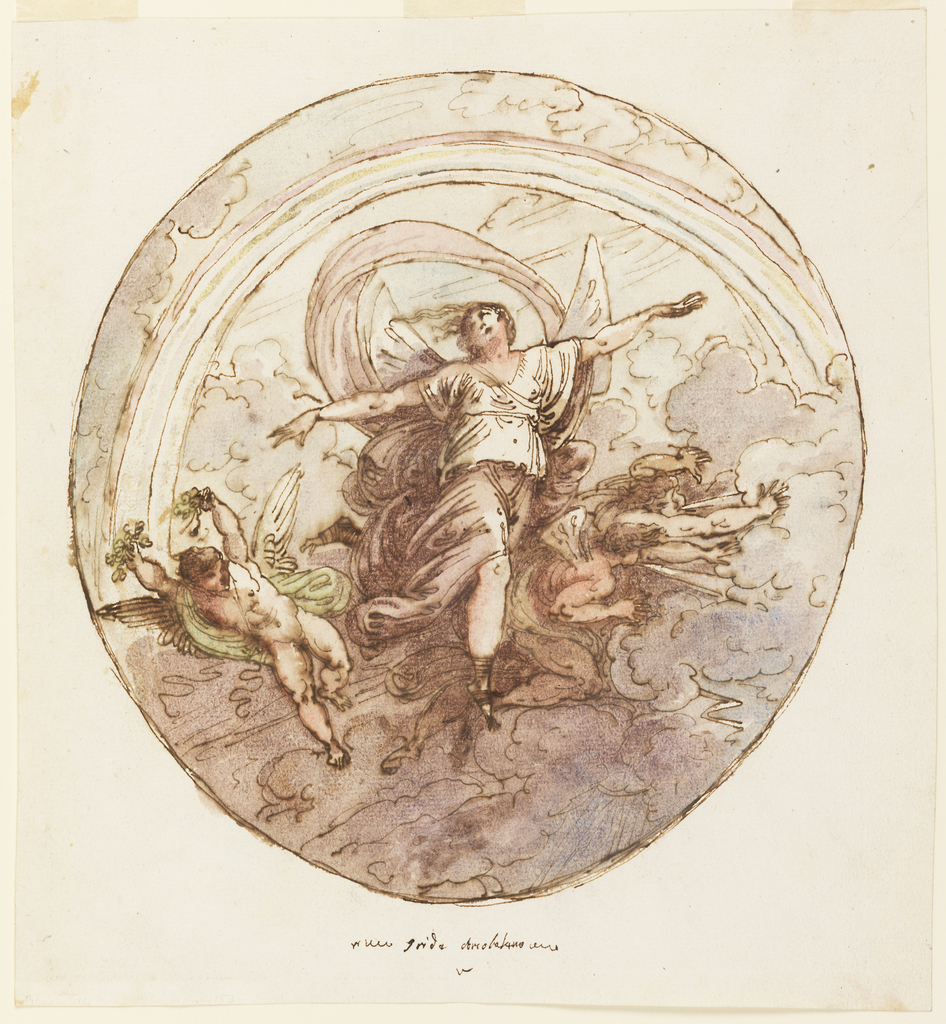From high up in the heavens, the Greek goddess Iris strides forward, extending her arms in both directions. The drapery of her garments, caught by a forceful wind, clings to her legs and billows behind her. Although she seems embattled by the wind, with her head titled back and her body contorted, she remains a graceful figure in the midst of a chaotic scene. Three winged putti surround her, two fending off the storm clouds with guests of divine breath, the third flying triumphantly upward. Iris’s attention, however, is not on the storm or the putti. Instead, she gazes upward toward the delicately-rendered rainbow, which emerges from the clouds to signal a calm end to the violent storm below.
This ink and watercolor drawing is one of hundreds of works on paper by the Italian neoclassical artist Felice Giani in Cooper-Hewitt’s collection—the largest holding of the artist’s work outside of Italy. Giani was a prolific painter and draftsman, best known for his numerous decorative schemes for walls and ceilings in the palaces, villas, and grand public buildings of Italy and France, including the Palazzo Milzetti in Faenza and the Palazzo Quirinale in Rome. A large portion of Giani’s drawings are figure studies for his paintings and interior decorations. This drawing of Iris and the rainbow, perhaps intended as a roundel for a vaulted ceiling, appears to be a preparatory sketch for a larger cycle of paintings
Giani, like many of his contemporaries, drew on ancient Greek and Roman literature, history, and mythology for his decorative programs. His choice of subjects often reflected the concerns of his patrons. His mythological subjects might have taken on allegorical meanings in the unstable period of Napoleon’s dramatic conquests and the short-lived Italian republic around the turn of the 19th century. Giani’s Iris may have been meant to suggest a greater calm in the midst of a politically turbulent time.
